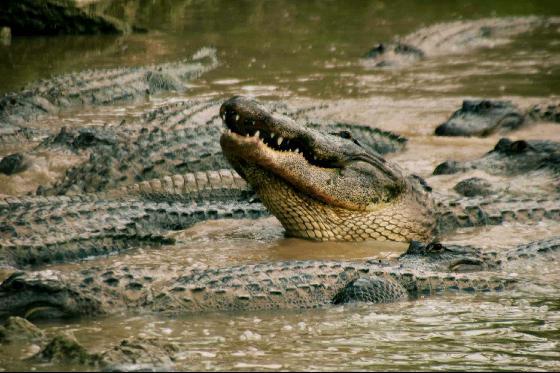The Everglades rebound in Florida
The Everglades is an extensive wetland system that is actually a sixty mile wide, extremely shallow river that flows from Lake Okeechobee over 100 miles to Florida Bay.
 |
|
Alligator in the Everglades [File photo] |
Over-development from sugar producers and urban sprawl have put tremendous stress on the entire ecosystem by draining the land and channeling the water. Now, after decades of restoration efforts, the state of the Everglades is beginning to improve.
A thorough study was conducted by researchers from the University of Florida and the South Florida Water Management District and is published in the Journal of Environmental Quality. They noticed that the water is less contaminated today than back in the 1970’s. The Everglades was declared a National Park in 1977.
The researchers examined the water from several sources entering the Everglades. Total nitrogen and phosphorus levels have declined since the area was labeled a national park. This suggests that efforts to reduce the negative impacts of agricultural and urban runoff have been working.
According to Ed Hanlon, lead author of the report, before the 1990s, there was not enough attention towards human impacts on the Everglades. The economic benefits of further development simply outweighed the costs to the environment. However, recent restoration and protection efforts have shown a noticeable improvement in water quality, which will benefit biodiversity.
One of the recent efforts is a result of the American Recovery and Reinvestment Act of 2009 which offered $96 million to Everglades restoration. As part of the stimulus package, the Tamiami Trail, a road bordering the northern border of the park is to be replaced by a mile long bridge. The road in place has effectively blocked the flow of water from reaching the park. Another 5.5 miles of bridges along the Tamiami Trail were proposed earlier this year.
The Everglades used to be the scourge of Floridians. It was a worthless swamp, filled with mud and mosquitos, with no economic value whatsoever. It made sense to drain out the water, and use the land for agriculture.
Now, the Everglades have become a source of pride for many in Florida, and there are many who will fight to protect it. It has become a jewel of the National Parks system, and therefore, receives abundant funds from Washington. So far, efforts to return it to its natural state have been successful, but as always, there is more work to be done.
 0
0 






